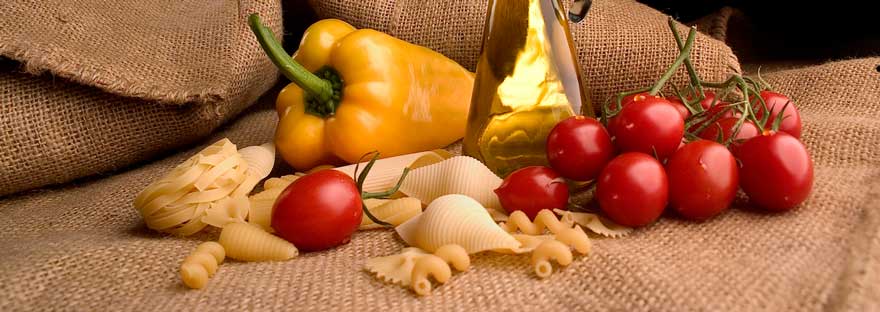Everybody knows what a chef is. It is right up there with astronaut and doctor on the list of jobs that kids learn about and want to be when they grow up. But no one knows what a food scientist is. The most common reaction I get when I say I’m a food scientist is: “So are you some kind of chef?”.
I admire and respect chefs, but I am not one. Chefs go through a rigorous culinary arts program. Food scientists get a degree in food science. The names say it all: science verses art. Both food science and culinary arts deal with food, but they have different purposes. Culinary arts focuses on food preparation for individuals, whereas food science focuses on bringing food to the masses.
One is not better than the other, rather, they compliment each other. But most professionals do not get training in both. Typically these fields of study lead to different applications as well. The chart below compares food science with culinary arts. This chart is by no means definitive of the two fields since it is based on generalities.
| Food Science | Culinary Arts | |
|---|---|---|
| Industry | Food Industry | Food Service |
| Consumer | Populations | Individuals |
| Creations | Prototypes | Final Products |
| Deadlines | Few Months | Minutes – Weeks |
| Work Space | Lab | Kitchen |
| Instructions | Formulas | Recipes |
| Uniform | Lab Coat | Chef Coat |
Industry
Professionals with food science training typically go into the food industry. This industry provides food to consumers. Ingredient suppliers, food companies, and grocery stores are all part of this industry.
In contrast, professionals with culinary arts training go into the food service industry. The food service industry provides meal preparation outside of the home. This includes restaurants, bakeries, cafeterias, and catering services.
Consumer
The culinary arts trains a person to feed individual customers. These customers request service and pick out the food to be prepared. Even when catering for a big event, there is a customer involved that makes the food decisions for the group that will be served.
Food science trains a person to meet the needs of populations. Consumers are grouped into target markets based on similarities in taste preferences, lifestyles or something else. A food scientist almost never works directly for a customer who will be consuming the product. Their customers are people who want to sell the product to other people.
Creations
A food scientist creates prototypes of what will be produced within a plant in mass quantities. A chef creates the food that consumer actually eat. This leads to a distinct difference in the day to day work. A food scientist makes something over and over again, tweaking it until it is ready to be mass produced then starts the process over again with something new. A chef creates items from a menu over and over again indefinitely. Chefs create new things too but they either become specials or regulars on the menu.
Deadline
Since culinary arts professionals create food that consumers actually eat, time is a critical factor. Just think of your favorite restaurant. You order food and (hopefully) in less than an hour you are eating it. Even caterers, who get order months in advance, make the food relatively close to the time it is eaten so it tastes fresh.
Food science professionals do not have immediate deadlines. Their deadlines are set by when the product needs to go to market. Many companies have deadlines every three to six months.
Work Space
Food science professionals work in labs. These labs look a lot like industrial kitchens. They have whatever kitchen appliances are needed: ovens, refrigerators, microwaves, mixers, etc. Of course, there are scientific instruments as well: pH meters, refractometers, beakers, etc.
Culinary arts professionals work in kitchens. These industrial kitchens have more work space then home kitchens do. They also have bigger appliances to accommodate the larger volumes of food that need to be prepared.
Instructions
This category is really just an issue of semantics. A recipe is a formula, a formula is a recipe. Both are a set of instructions that list ingredients, ingredient amounts, and preparation instructions.
Uniform
By convention, most culinary arts professionals wear a chef’s coat. The iconic chef’s coat is white, with a double row of buttons down the front, and comes down to the waist.
Most food science professionals wear lab coats. A standard lab coat is white, with a single row of buttons down the front, and comes down to mid thigh.
Wrap Up
Food science and culinary arts are two different fields of study that lead to different kinds of jobs. Culinary arts focuses on food preparation, whereas food science focuses on bringing food to the masses. There is some crossover. Culinology is the blending of culinary arts and the science of food. Individuals also switch industries. Someone trained in culinary arts can go into the food industry and be a valuable member of a product development team. And a person trained in food science can start up their own food service business (restaurant, catering, bakery, etc). But overall, the two fields are separate.
Photo: Giuseppe Mascia


I agree !! and heres my perceptions: (hope to be shared)
Introduction
Bromatology is a relatively new field that had only been recently designated the professional denomination. It integrates a wide range of sub-disciplines associating to the science of food, food derived products and food related aspects. This article intends to help those interested in pursuing careers in bromatology and those making bromatology related career decisions from the wide range of opportunities available. The content of this article is based on experience after years of university education in this field including communications with many seniors and colleagues, bromatology related employers and academic professionals as well as reviewing the spectrum of bromatology related scientific journals.
What is Bromatology
The roles of bromatologists can be roughly divided into four main categories but they all have inter-relationships with each other. The four main sub-fields include food product development, food physiology, food engineering and food forensics and biosecurity. Each sub-field includes a range of sub-topics and a few of them are listed here. Some of these classifications may be in ambiguous sub-fields and may overlap with roles in other fields but note that no field will be exclusively confined due to the importance of different approaches and perspectives in different fields.
Food product development constitutes of an amplitude of sub-topics such as commercial products (novel flavors, gluten-free, probiotic cultures, new restaurant menu), nutraceuticals (multi-vitamins, coenzyme Q10, dietary fibre, shark cartilage), specialized diets (perinatal, geriatric, exercise, weight management) and food related materials (food additive and food packaging material synthesis and extraction).
The sub-field of food physiology is composed of sub-topics extending to food component effects (nutrition, food toxicology), sensory psychology (neural hypothalamic appetite control, psychophysics – Weber & Fechner’s law), food related diseases (diabetes, cardiovascular diseases), food microbiology (pathogens, probiotics), food safety (contaminants, allergens, detergents) and food physiology genetics (nutrigenomics, gastronomics, toxicogenomics).
Furthermore, there is food engineering that accommodates domains stretching in manufacture (synthesis scale up), packaging (nano-encapsulation), distribution (shelf life deterioration kinetics), food processing effects (pulsed electric field), food physics (Newtonian rheology), food genetic modification (GM salmon, maize), production waste management (process by-products), food mathematical modeling (stochastic model for spoilage rate) and food agriculture (food crop fertilizers, irrigation quality).
Food forensics and biosecurity focuses on certification of claims (GM free, nutrition claim, organic), prevention of food terrorism (1984 Oregon attack – 751 food poisoning) and characteristics and origins of food safety compromising agents (food poisoning, lead contaminants, milk melamine scandal).
Academic Training for Bromatological Career Pathways
The bromatology undergraduate degree provides career opportunities in all positions in the bromatology field, but some roles may require higher degrees, further certification or build-up career ranks after the completion of the undergraduate degree.
The general bromatology academic training pathway is as follows:
Academic training should be reflective of what type of bromatology opportunities you want to pursue in the future and this provides a guideline to minimize unnecessary prodigality financially and temporally. Different ranks of academic training would open up different opportunities, but do not accumulate as the more specialized perspectives and opinions gained from higher degrees would lose some opportunities in positions that favors an all-round considerations spanning all sub-fields of bromatology.
The undergraduate degree cannot teach you everything that you need to know in the field, because of the complexity of food and associated systems which leads to an excess of bromatology information, fast transition and advancement speed of bromatology information and the significant amount of bromatology information remaining unsolved. However, it gives you a solid grounding in this field with specialized perspectives and opinions that can be applied to all other aspects in bromatology.
As a bromatology graduate, your role involves specializing in a range of sub-topics in all bromatology sub-fields in one position, involving all of consulting, management, practical and basic research. Postgraduate diploma degree also provides similar pathways but the macro-specialized coursework may provide advantages in certain industry in the bromatology field, such as dairy or nutraceutical industry.
As a bromatology professional postgraduate (dietetics, food safety, food engineering), you macro-specialize in a range of sub-topics in one bromatology sub-field, involving management and basic research but concentrates on consulting or practical, depending on the degree.
As a bromatology research postgraduate (postgraduate honors, bromatology research masters), you will also macro-specialize in a range of sub-topics in one bromatology sub-field, but centralizes on intermediate level research in addition to management, consulting and practical.
As a bromatology research doctorate, you supra-specialize in one sub-topic in one sub-field in positions that requires practical and consulting but focuses on advanced level research and management.
Conclusion
Without bromatologists, the world would not have physical, social and economic access to a satisfactory range of food and food derived products that are safe, healthy and palatable at all times, to fulfill individual dietary preferences for an active healthy lifestyle. The bromatology related decisions should be considered thoroughly before pursuing different degrees to comply with your career directions. Higher degrees act as an access to macro- and supra- specialized pathways in bromatology but are disadvantageous in certain positions requiring a more wholesome perspective.
LikeLike
Thanks for good information
LikeLike
Most professional chefs today, particularly those involved in feeding large populations in institutional settings, are trained in the practical applications of food science. While I have never participated in research activities, I regularly use the knowledge of food science and have applied it to feeding thousands of students of higher education. Outside of the marketing of cooking on TV, little of the public promotion of cooking has anything to do with actually preparing a proper meal. Most food service professionals have to apply the knowledge of food science in order to, at the least, avoid killing their customers through the lack of hygiene and food poisoning or food-borne illness.
LikeLike
Yes, you are absolutely correct !
Coming to the point, I’m on my undergraduation of BSC. Marine catering and hotel management with also one food science paper . But I’m interested in choosing to go in the field of food science. Do I have any opportunities in that field?
Or is there any possibilities of choosing postgraduate in food science?
LikeLike